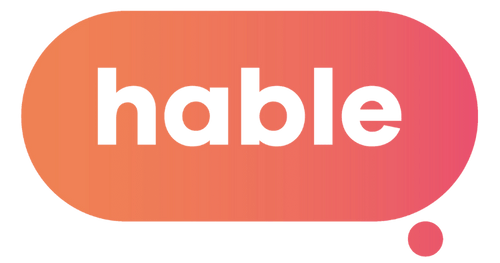When you start searching for the term ‘blindness’, it can get quite confusing to completely understand the different terms that are thrown around. We speak of being blind, visually impaired, partially sighted, having low vision and being legally blind.
But what are the differences and how do you define what is what? In this blog we explain the different definitions and why they are important to people that live with sight loss.
The Cambridge Dictionary defines blindness as the condition of being unable to see.

Legally blind vs. completely blind
What you might not know. There is a difference between being totally blind and being ‘legally blind’. Legal blindness is a term used by a country’s government to determine who receives certain benefits and assistance.
People who are completely blind don’t see any light or form. Only 15% of the people with an eye condition are completely blind. People who are legally blind, are sometimes able to see but not fully.

So when are you legally blind?
The criteria to be certified legally blind differentiates per country. In the United Kingdom the Snellen test is used to test your visual acuity. Visual acuity is your central vision, the vision to see details.
The Snellen test consists of a number of rows of letters that get smaller the lower you go on the chart.
The Snellen scale
Normal vision acuity on the Snellen scale is 6/6. The first number is the distance from the chart, in metres. Usually this is 6 metres. The second number is the number or lines you are able to read from the chart. The top line is 60.
The lower you get the smaller the second number gets. If you have regular vision and you are able to read all the way to the bottom. Your vision would be 6/6. This means that the larger the second number is, the worse your sight is.

To give an example. If the second line is marked as 36 and you have 6/36 vision, you are able to see the second line from 6 metres away. Whereas a person with standard vision could read the second line from 36 metres away.
Certifications for sight loss
In the United Kingdom, there are two certifications that you can receive. You receive these certifications when your sight meets certain criteria while wearing the glasses or contacts you might need.
To make sure that wearing glasses or contacts don’t improve your sight in a way that you are able to have full vision. The UK makes the difference between severely sight impaired (blind) and sight impaired (partially sighted).

Measuring your eyesight
To decide if you meet the criteria for a certification in the United Kingdom, you visit a consultant ophthalmologist, an eye specialist. They will measure two things: visual acuity and visual field.
Visual acuity means your central vision. This is the vision you use to see details. The visual field is how much you can see around while looking straight ahead.
Difference between blindness and visual impairment
We mentioned the definition of blindness at the start of this blog. Blindness is the condition of being able to see. But what is the difference between blindness and visual impairment?
Visual impairment is “a decrease in the ability to see to a certain degree that causes problems not fixable by usual means, such as glasses.”
The people who have been living with blindness since birth usually see nothing. But, people who have lost their vision later in life usually see some light, colour and shapes.

In the United States of America, they have four definitions to differentiate certain levels of sight loss:
- Partially sighted
- Low vision
- Legally blind
- Totally blind
The differences between these four levels are based on visual acuity. Like we mentioned before, visual acuity is your central vision. This vision is measured by using the letter charts, like the Snellen test.

Partially sighted means a person has partial vision. This could be in one or in both eyes. Totally blind means a person has completely lost their vision.
The other two levels, low vision and legally blind, are determined when doing a test with a letter chart. Both of these terms are only used when the lack of sight can’t be fixed with prescription glasses or contacts.
So why is it so important that we are aware of these different definitions?
The definitions and criteria also differentiate per country. The government sets these levels to be able to decide who gets certain benefits. The government then provides people with a registration. To make sure the people that need the benefits, actually receive them, and the people who don’t, can’t take advantage of them.
In the United Kingdom around 2 million people suffer from sight loss. Only 360.000 of them are registered as blind or partially sighted. Benefits that you might receive because of this registration in the UK may include:
- Disability Living Allowance (DLA)
- Personal Independence Payment (PIP)
- Reduces fees on public transport such as the train and bus
- Parking exceptions
In conclusion, understanding the nuances between terms like blindness, visual impairment, partial sight, low vision, and legal blindness is more than an exercise in semantics; it is a crucial aspect of recognizing and addressing the needs of individuals with sight loss.
Did you enjoy this content? Don't forget to share it with your friends and family. For more content, several blogs are suggested for you below.

